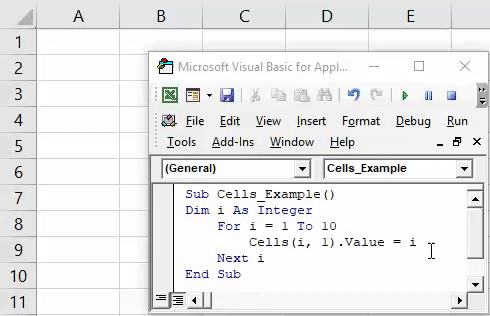
Mastering VBA is a crucial skill for any Excel user who wants to take their productivity to the next level. One of the fundamental concepts in VBA is referencing cells, which allows you to manipulate and interact with data in your worksheets. In this article, we will explore the different ways to reference cells in VBA, providing you with the knowledge and techniques to work with cells like a pro.
The Importance of Referencing Cells in VBA
Referencing cells is a critical aspect of VBA programming. It allows you to access and manipulate data in your worksheets, which is essential for automating tasks, creating custom tools, and building interactive dashboards. By mastering cell referencing, you can write more efficient and effective code, making you a more productive and valuable Excel user.
Understanding Cell References
Before we dive into the different ways to reference cells, let's cover the basics. A cell reference is a way to identify a specific cell or range of cells in a worksheet. Cell references can be absolute or relative, and they can be used to access data, formulas, or formatting.

Absolute vs. Relative Cell References
There are two types of cell references in VBA: absolute and relative. Absolute references always refer to the same cell or range, regardless of the active cell or selection. Relative references, on the other hand, change depending on the active cell or selection.
For example, the absolute reference $A$1 always refers to cell A1, while the relative reference A1 refers to the cell one row down and one column to the right of the active cell.
Range Object
The Range object is a powerful tool for referencing cells in VBA. It allows you to access and manipulate a range of cells as a single unit. To create a Range object, you can use the Range method, which takes a string argument that specifies the cell or range you want to reference.
For example, the following code creates a Range object that references the range A1:C3:
Dim myRange As Range
Set myRange = Range("A1:C3")
You can also use the Cells property to reference a specific cell or range. For example:
Dim myCell As Range
Set myCell = Cells(1, 1)
This code references the cell in row 1, column 1 (i.e., cell A1).
Referencing Cells Using A1 Notation
A1 notation is a common way to reference cells in VBA. It uses a string argument that specifies the cell or range you want to reference, using the standard Excel notation (e.g., A1, B2:C3, etc.).
To reference a cell using A1 notation, you can use the Range method, like this:
Dim myCell As Range
Set myCell = Range("A1")
This code references the cell A1.
Referencing Ranges Using A1 Notation
You can also use A1 notation to reference ranges of cells. For example:
Dim myRange As Range
Set myRange = Range("A1:C3")
This code references the range A1:C3.
Referencing Cells Using Row and Column Numbers
Another way to reference cells in VBA is by using row and column numbers. This method is useful when you need to reference cells programmatically, without knowing the specific cell addresses.
To reference a cell using row and column numbers, you can use the Cells property, like this:
Dim myCell As Range
Set myCell = Cells(1, 1)
This code references the cell in row 1, column 1 (i.e., cell A1).
Referencing Ranges Using Row and Column Numbers
You can also use row and column numbers to reference ranges of cells. For example:
Dim myRange As Range
Set myRange = Range(Cells(1, 1), Cells(3, 3))
This code references the range A1:C3.
Referencing Cells Using Offset and Resize
The Offset and Resize methods are two powerful tools for referencing cells in VBA. They allow you to reference cells relative to a specific cell or range.
To reference a cell using Offset, you can use the following code:
Dim myCell As Range
Set myCell = Range("A1").Offset(1, 1)
This code references the cell one row down and one column to the right of cell A1.
To reference a range using Resize, you can use the following code:
Dim myRange As Range
Set myRange = Range("A1").Resize(3, 3)
This code references the range A1:C3.
Gallery of VBA Cell References




FAQs
What is the difference between absolute and relative cell references?
+Absolute references always refer to the same cell or range, regardless of the active cell or selection. Relative references, on the other hand, change depending on the active cell or selection.
How do I reference a cell using A1 notation?
+To reference a cell using A1 notation, you can use the `Range` method, like this: `Dim myCell As Range: Set myCell = Range("A1")`
What is the difference between `Offset` and `Resize` methods?
+The `Offset` method references a cell relative to a specific cell or range, while the `Resize` method references a range of cells based on a specific cell or range.
By mastering cell referencing in VBA, you can take your Excel skills to the next level and automate tasks with ease. Remember to practice using the different methods and techniques outlined in this article to become a VBA expert. Happy coding!











